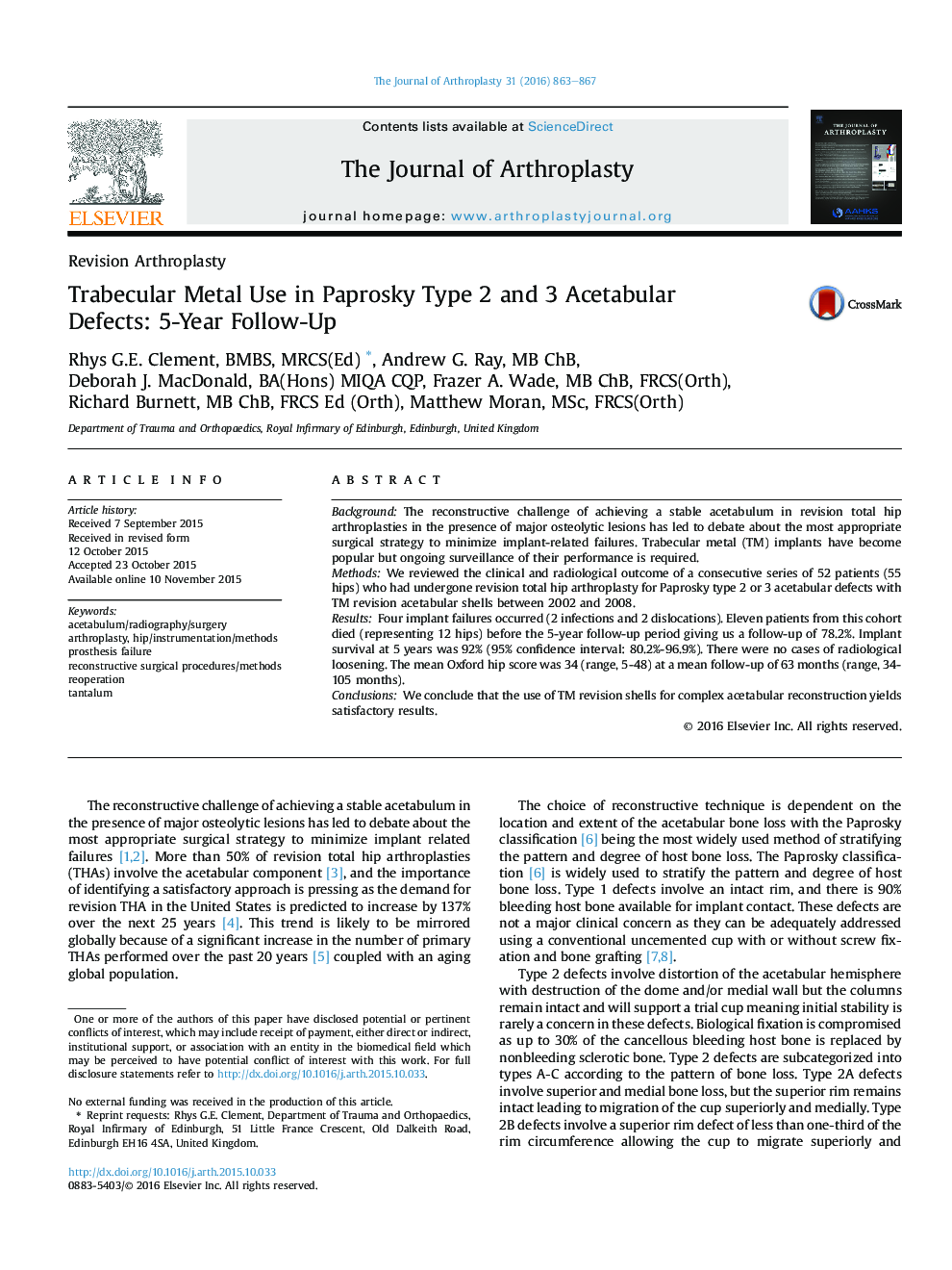| Article ID | Journal | Published Year | Pages | File Type |
|---|---|---|---|---|
| 4060086 | The Journal of Arthroplasty | 2016 | 5 Pages |
BackgroundThe reconstructive challenge of achieving a stable acetabulum in revision total hip arthroplasties in the presence of major osteolytic lesions has led to debate about the most appropriate surgical strategy to minimize implant-related failures. Trabecular metal (TM) implants have become popular but ongoing surveillance of their performance is required.MethodsWe reviewed the clinical and radiological outcome of a consecutive series of 52 patients (55 hips) who had undergone revision total hip arthroplasty for Paprosky type 2 or 3 acetabular defects with TM revision acetabular shells between 2002 and 2008.ResultsFour implant failures occurred (2 infections and 2 dislocations). Eleven patients from this cohort died (representing 12 hips) before the 5-year follow-up period giving us a follow-up of 78.2%. Implant survival at 5 years was 92% (95% confidence interval: 80.2%-96.9%). There were no cases of radiological loosening. The mean Oxford hip score was 34 (range, 5-48) at a mean follow-up of 63 months (range, 34-105 months).ConclusionsWe conclude that the use of TM revision shells for complex acetabular reconstruction yields satisfactory results.
